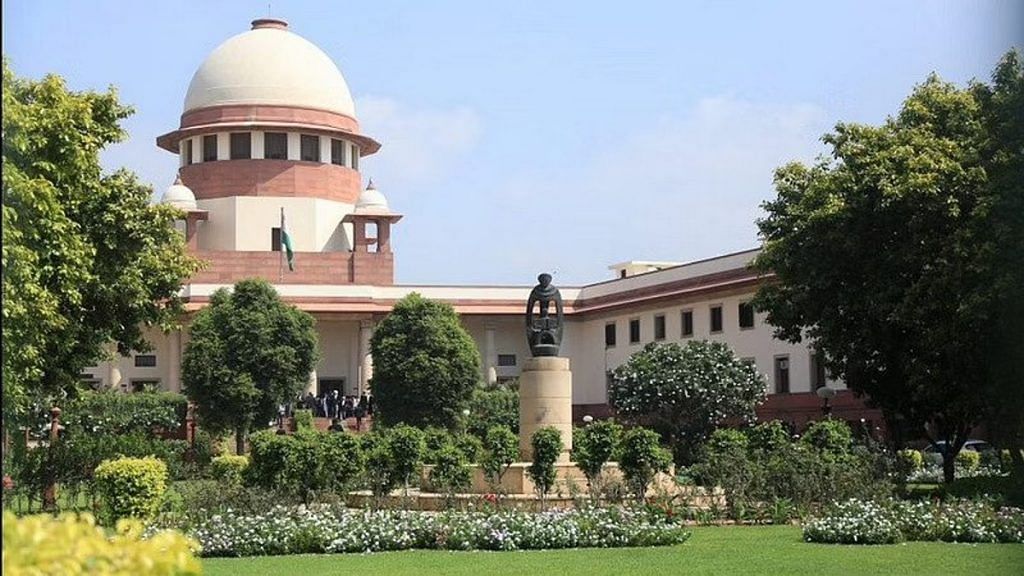In the short yet eventful tenure of Chief Justice of India UU Lalit so far, the Supreme Court of India has started taking up Constitution Bench matters with renewed vigour.
Thus far, 25 Constitution Bench matters have been listed, with the judgment delivered in one and reserved in another.
This promising development marks an attempt to reverse a concerning decline over the decades in the number of Constitution Benches constituted by the SC and the judgments delivered by them.
According to studies, the number of Constitution Benches constituted by the SC rose to around 100 during the 1960s, shrunk to around 10 in the early 2000s to none during the tenure of former CJI NV Ramana.
Correspondingly, the number of Constitution Bench judgments delivered by the SC over the years has also waned—from around 135 during the 1960s to less than five since 2020. This is surprising given the fact that the SC worked with much leaner strength during the 60s than its present sanctioned strength of 34 judges.
A probable reason for the decline might be backlog of other ‘regular’ matters before the SC. Whatever the case, the numbers demonstrate a continued apathy of the SC towards the Constitution Benches—be it their formation, or when formed, in delivering judgments on the most significant class of matters pending before it. The Vidhi Centre for Legal Policy finds that data provided on the SC website on Constitution Bench matters is inadequate in regards to their period of pendency and several other matters connected to them.
Also read: NV Ramana: The Chief Justice of India who didn’t like shouting in court
Workings of Constitution Bench
Usually, a Bench comprising two or three judges is constituted for a regular matter before the SC. It adjudicates ordinary matters like criminal or civil appeals, special leave petitions and various other miscellaneous cases. However, whenever an important matter ‘involving a substantial question of law as to the interpretation of the Constitution’ comes up before it, the SC forms Constitution Benches under Article 145(3) of the Constitution—with at least five judges (or more, like seven, nine or 11). This usually happens when the regular SC Benches deliver contradicting judgments on a substantial point of law, or when one Bench doubts the validity of the law laid down by a previous Bench and refers the matter for adjudication to a Constitution Bench.
It is understood, as a matter of judicial discipline, that the law laid down by a Bench consisting of a larger number of judges has more authority as compared to the law laid down by a smaller Bench. Therefore, whenever a Bench feels that a larger Bench before it has erred in answering any important constitutional question, it may refer the matter to the CJI for constituting a special Constitution Bench, which is larger than the Bench whose judgment is in question. However, even in smaller Benches, the decisions of all the sitting judges may not be unanimous. In these cases, as per Article 145(5) of the Constitution, the concurrence of a majority of the judges or ‘majority opinion,’ is considered the ‘collective opinion’ of the court.
Also read: What’s the Delhi vs Centre ‘control of services’ dispute being heard by SC constitutional bench
Paradox of judicial numbers
The workings of ‘majority opinion’ could give rise to curious situations. For example, consider a judgment unanimously given by a five-judge Bench. Later on, when a larger Bench of seven judges is formed to review the said judgment, four judges decide to overrule it, and three judges uphold it. Upon a simple calculation, we find that eight judges are in favour of the first judgment—five from the first Bench and three from the larger Bench— and only four judges are against it. In such situations, the conundrum was whether the total number of judges in favour of a particular proposition should prevail, or the strength of a Bench overruling a previously held proposition.
The Supreme Court solved the problem in a recent Constitution Bench judgment in the matter of M/S Trimurthi Fragrances (P) Ltd. v. Govt of NCT of Delhi (2022). The court clarified that the deciding factor is the strength of the Bench and not the number of judges who have taken a particular view. The reasoning for this arrangement stems from considerations of practicality and the ‘doctrine of precedents’ i.e. stability in the law. According to a paragraph in the judgment, ‘If this arrangement were to be departed from and the legitimacy of a subsequent larger Bench ruling were to be doubted on the ground that it comprises of either plurality of opinions or a narrow majority as compared with a previous Bench ruling of lower strength, there would be uncertainty and lack of clarity in the realm of precedential certainty.’
Another important reasoning given by the Supreme Court was that having a larger number of judges on the Bench leads to a more robust and wider judicial deliberation, including dissenting opinions. Large Benches foster greater application of the judicial mind not only in terms of the number of judges but also the cross-section of opinions that the Bench considers within itself.
With this judgment, the Supreme Court settled a vexed issue, which was likely to come up in future Constitutional Benches.
The effort by CJI UU Lalit to reorient the wavering focus of the SC back to the Constitutional Bench matters is a significant moment given the lackadaisical past of his predecessors. With more Constitution Bench sittings expected in the coming weeks and months, the Supreme Court is expected to continue to dominate the news headlines.
Mohammad Nasir is Assistant Professor of Law at Aligarh Muslim University and author
of Syed Mahmood: Colonial India’s Dissenting Judge (Bloomsbury 2022). Taha Bin Tasneem reads law at Aligarh Muslim University. Views are personal.
(Edited by Ratan Priya)
